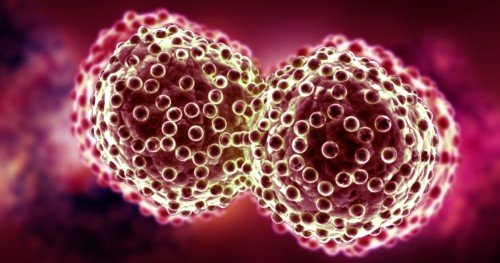
Cancer is a complex disease that affects millions of people worldwide. It is a group of diseases characterized by the uncontrolled growth and spread of abnormal cells in the body. These cells can invade and destroy healthy tissues, leading to serious health problems.
There are many types of cancer, each with its own unique set of symptoms and treatment options. Some of the most common types of cancer include breast cancer, lung cancer, prostate cancer, and colorectal cancer. Other less common types of cancer include leukemia lymphoma, and brain cancer.
There are many types of cancer, and each one is classified by the specific cells that are affected.
Here are some of the most common types of cancer:
-
Breast cancer: This type of cancer occurs when abnormal cells grow and multiply in the breast tissue. It can affect both men and women, but it is more common in women.
Breast cancer is a type of cancer that occurs when abnormal cells grow and multiply in the breast tissue. It is the second most common type of cancer in women, after skin cancer, and can also affect men.
Breast cancer can be classified into different subtypes based on the specific cells that are affected. The most common types include ductal carcinoma, which starts in the milk ducts, and lobular carcinoma, which starts in the lobules, or milk-producing glands, of the breast.
Symptoms of breast cancer can include a lump or thickening in the breast tissue, changes in the size or shape of the breast, changes in the texture of the skin, and nipple discharge. However, not all breast lumps are cancerous, and some breast cancers can be present without any symptoms.
Diagnosing breast cancer usually involves a combination of imaging tests, such as mammography or ultrasound, and a biopsy, which involves removing a small sample of breast tissue for examination under a microscope.
Treatment options for breast cancer depend on the type and stage of the disease. Common treatments include surgery to remove the cancerous tissue, radiation therapy to kill cancer cells, and chemotherapy to destroy cancer cells throughout the body. Hormone therapy and targeted therapy may also be used, depending on the subtype of breast cancer.
Prevention and early detection are important for improving outcomes for breast cancer. Women are recommended to get regular mammograms starting at age 50, or earlier if there is a family history of breast cancer. Lifestyle factors that may reduce the risk of breast cancer include maintaining a healthy weight, getting regular exercise, limiting alcohol consumption, and avoiding smoking.
Overall, early detection and prompt treatment can improve outcomes for breast cancer. If you have any concerns about your breast health, it’s important to talk to your doctor.
-
Lung cancer: Lung cancer develops when abnormal cells grow and multiply in the lungs. It is often caused by smoking, but it can also occur in non-smokers.
-
Prostate cancer: This type of cancer affects the prostate gland, which is part of the male reproductive system. It is the most common type of cancer in men.
-
Colorectal cancer: Colorectal cancer affects the colon or rectum, which are part of the digestive system. It usually starts as small, noncancerous growths called polyps that can become cancerous over time.
-
Skin cancer: Skin cancer occurs when abnormal cells grow and multiply in the skin. There are several types of skin cancer, including basal cell carcinoma, squamous cell carcinoma, and melanoma.
-
Leukemia: Leukemia is a type of cancer that affects the blood and bone marrow. It causes the body to produce abnormal white blood cells that can’t fight off infections.
-
Lymphoma: Lymphoma affects the lymphatic system, which is part of the immune system. It causes the body to produce abnormal white blood cells called lymphocytes.
-
Brain cancer: Brain cancer develops when abnormal cells grow and multiply in the brain. It can affect people of any age, but it is more common in older adults.
-
Ovarian cancer: Ovarian cancer affects the ovaries, which are part of the female reproductive system. It often goes undetected until it has spread to other parts of the body.
These are just a few of the many types of cancer that exist. Each type has its own unique set of symptoms, risk factors, and treatment options. If you are concerned about your risk of developing cancer or if you have any symptoms, it’s important to talk to your doctor.
The causes of cancer are not fully understood, but researchers believe that a combination of genetic and environmental factors can contribute to its development. Some of the environmental factors that may increase the risk of cancer include exposure to tobacco smoke, radiation, certain chemicals, and viruses.
The symptoms of cancer can vary depending on the type and stage of the disease. Common symptoms may include fatigue, weight loss, pain, and changes in the skin, such as the appearance of a new mole or a change in an existing mole.
Diagnosing cancer typically involves a combination of physical exams, imaging tests, and biopsies. Treatment options for cancer depend on the type and stage of the disease. Some of the most common treatments include surgery, chemotherapy, radiation therapy, and immunotherapy.
Preventing cancer is an important goal for public health. Some of the ways to reduce the risk of cancer include avoiding tobacco use, maintaining a healthy diet and exercise routine, getting regular cancer screenings, and reducing exposure to environmental toxins.
In conclusion, cancer is a serious and complex disease that affects millions of people worldwide. While the causes and treatments of cancer are still being studied, there are many ways to reduce the risk of developing the disease and to improve outcomes for those who are diagnosed with it. With continued research and public health efforts, we can work towards a future where cancer is a less common and less devastating disease.








